Reeves Art + Design had a big opening Saturday, for Dual and Russ Rubin. Calling it an “opening” feels like a serious understatement—it was a spectacle. Visiting it was like visiting an amusement park, with kiddie rides and live animal attractions. The crowd on opening night was enormous, and there were more young children than I've ever seen at an art opening.
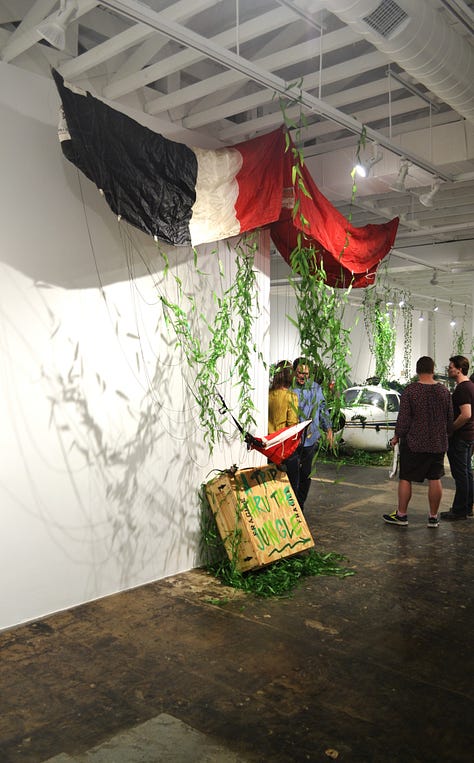
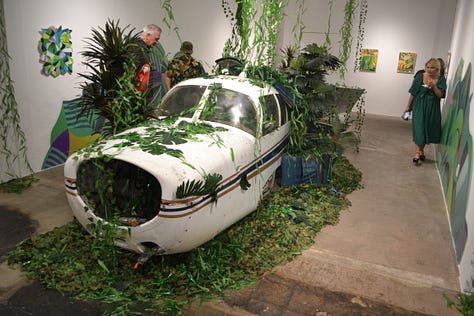
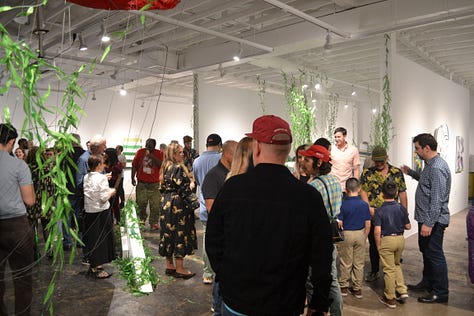
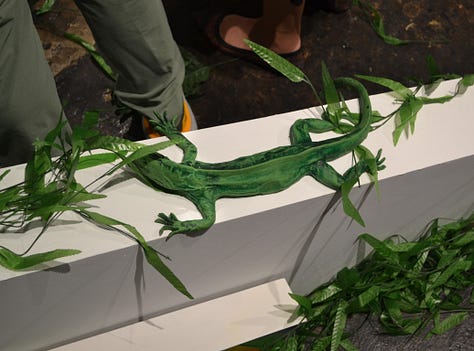
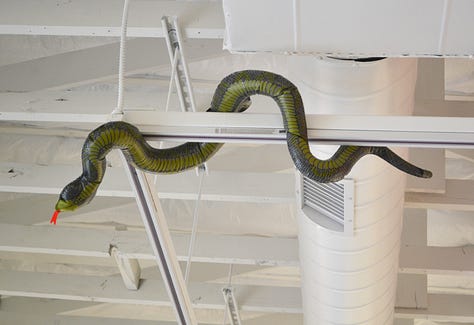
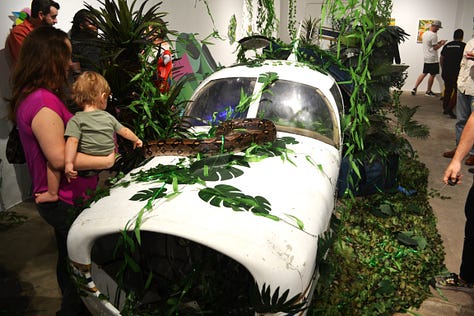
Dual is best-known as a graffiti artist in Houston. His exhibit at Reeves is all about artworks hung on walls, not graffiti. The title of Dual’s half of the Reeves exhibit is A Trip Thru the Jungle. The title reflects the work in the exhibit, but also the décor of the gallery, which is hung with vines, fake snakes and reptiles, and most spectacularly the remains of a prop plane, placed in the show as if it had crashed in a jungle.
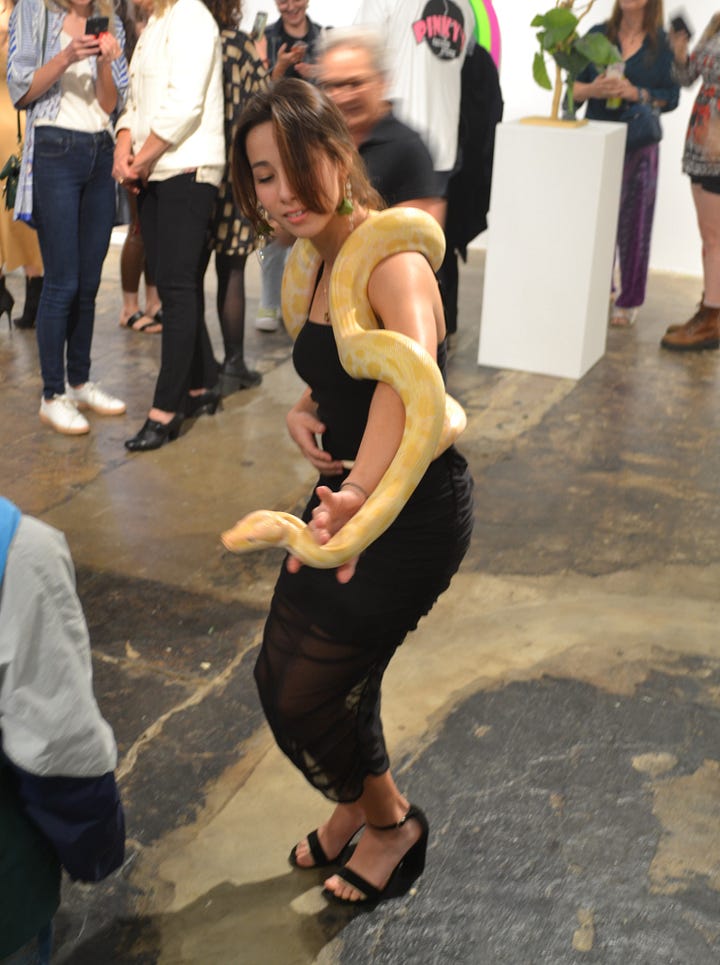
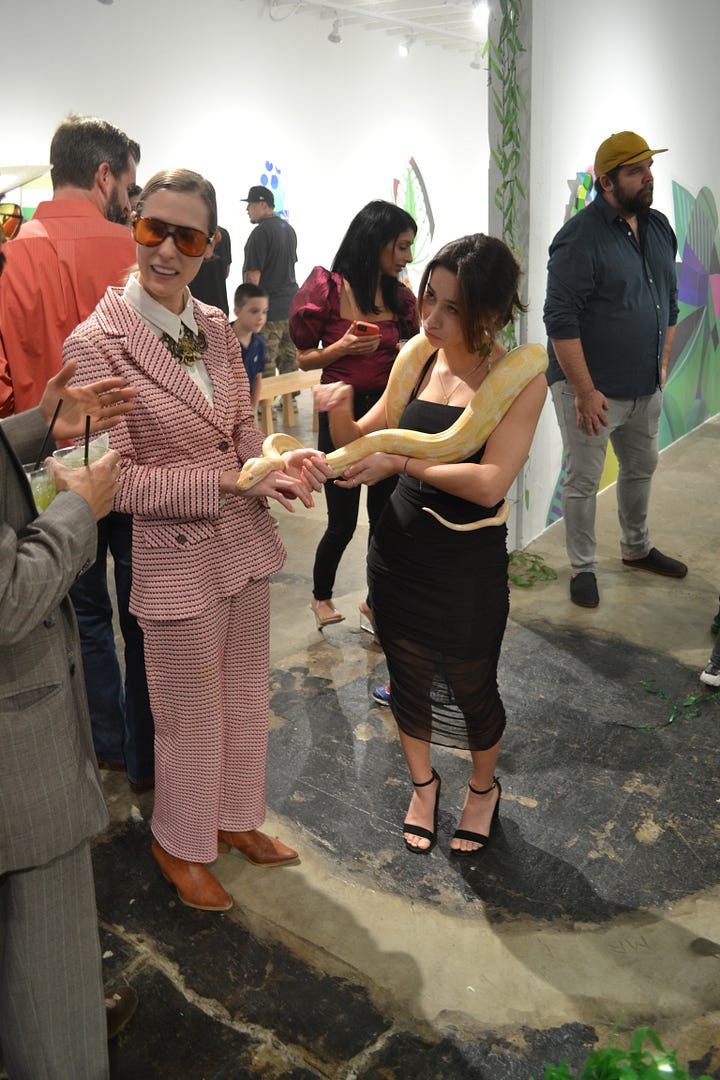
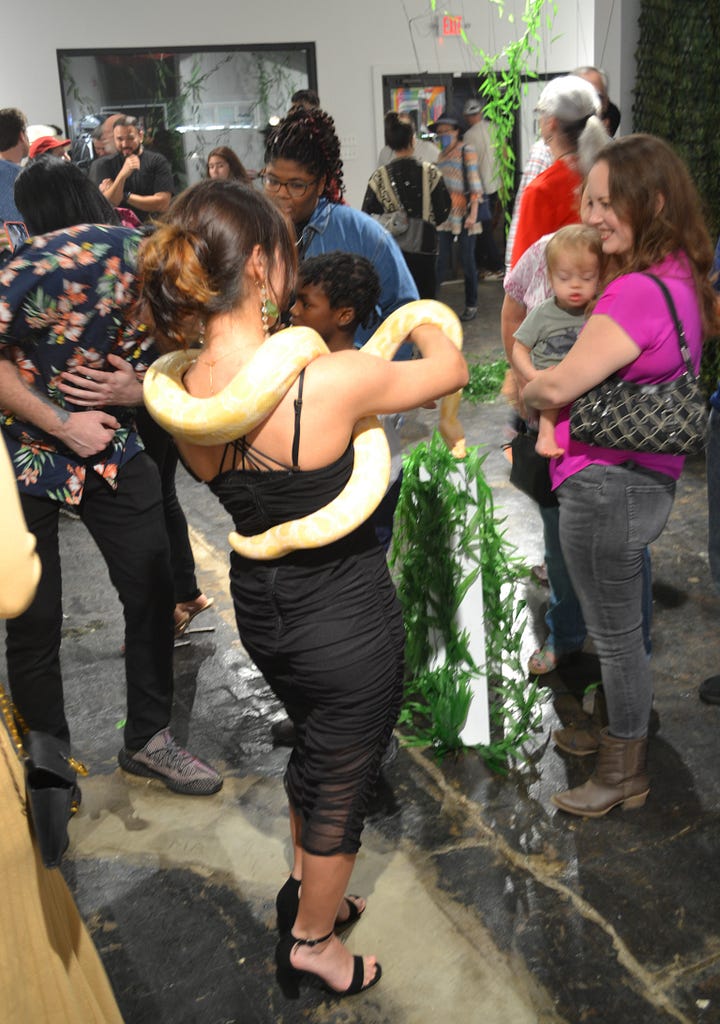
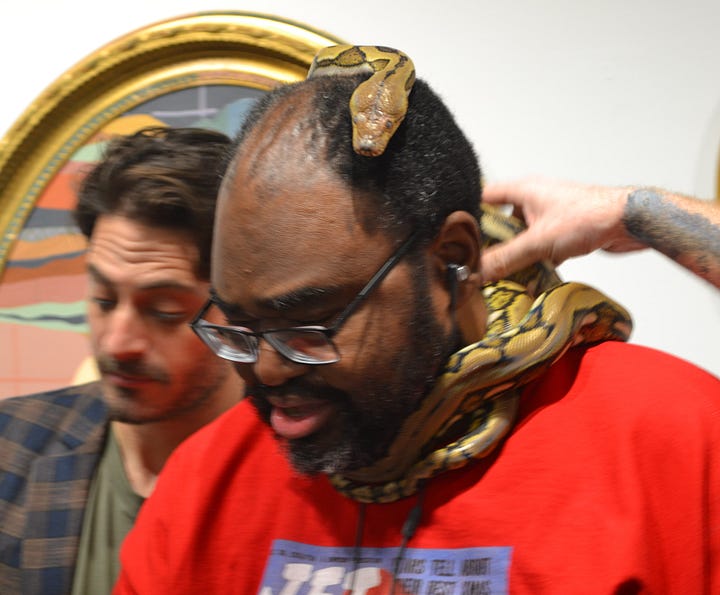
Beyond the jungle-ish decorative elements, snake tamers were hired to provide live, tropical entertainment. They wrapped the snakes around themselves and even around some members of the crowd. There was always a risk that an audience member with a snake around his neck might wander off. I wondered if the snakes were stressed by the crowds, but I know the snake handlers were stressed as people wandered from gallery to gallery with their snakes still hanging on them.
On Russ Rubin’s side of the exhibit, he had a kiddie ride painted in his signature style that was popular with the many kids attending, who rode it all night. He said he collected vintage kiddie rides like this. This one was titled Look Mommy, and his exhibit was called Lost and Found.
This was all extremely entertaining, but what about the art itself? All this stuff was very distracting. I found I had to come back a couple of days later to see it without the crowds and snakes.
I have no idea what Dual’s civilian name is. His website is very coy, not only not mentioning his legal name, but also blanking out his face in his author photo. Not that his “real” name is important. As far as this exhibit goes, the name A Trip Thru the Jungle fits the art itself. Many of the pieces are semi-abstract depictions of tropical vegetation painted on shaped wood surfaces.
Many of the wood surfaces are shaped more-or-less in the shape of leaves, but the images are not just paintings of leaves. They are multi-layered images of leaf-like shapes. They are composed primarily of shades of green and yellow, but other colors sneak in there. Most of the colors and shapes could be found in a dense jungle, but not all of them. Blue Dot feels unlike something one would find in nature, but writing this, I acknowledge that nature will surprise you with the shapes and colors that it presents.
Some pieces specifically reference nature meeting the man-made world, as in Kite in the Trees. The blue striped shapes feel like a distinctly man-made element among the other natural seeming elements.
I write “natural seeming” deliberately. Dual’s slick painting style is a distinctly human version of nature. In no way is Dual attempting to be a naturalistic or realistic painter. Every painting smooths out nature’s complexities into a smooth, all-too-human abstraction.
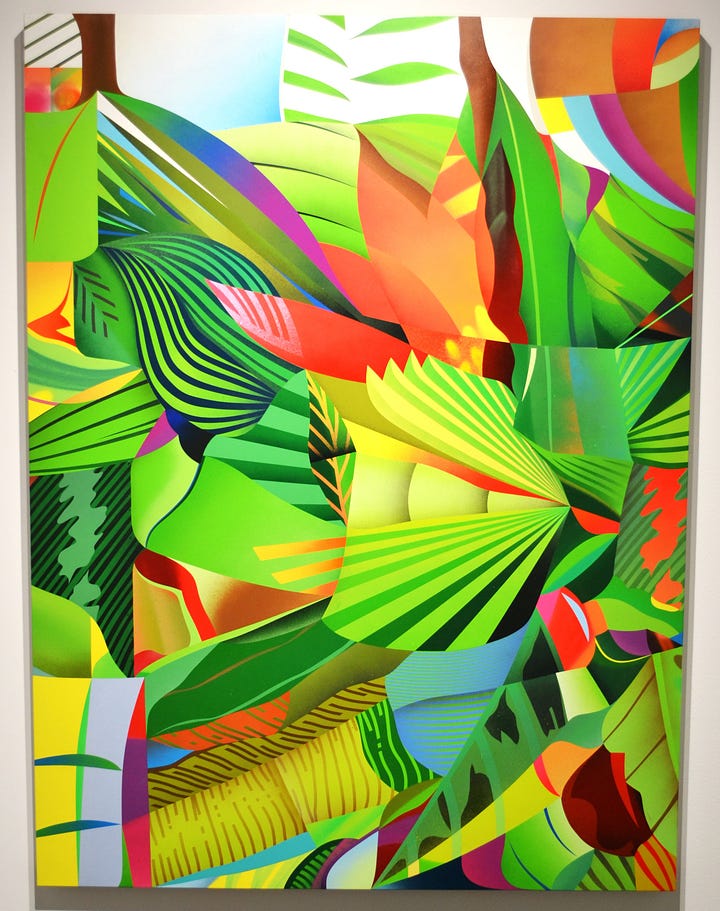
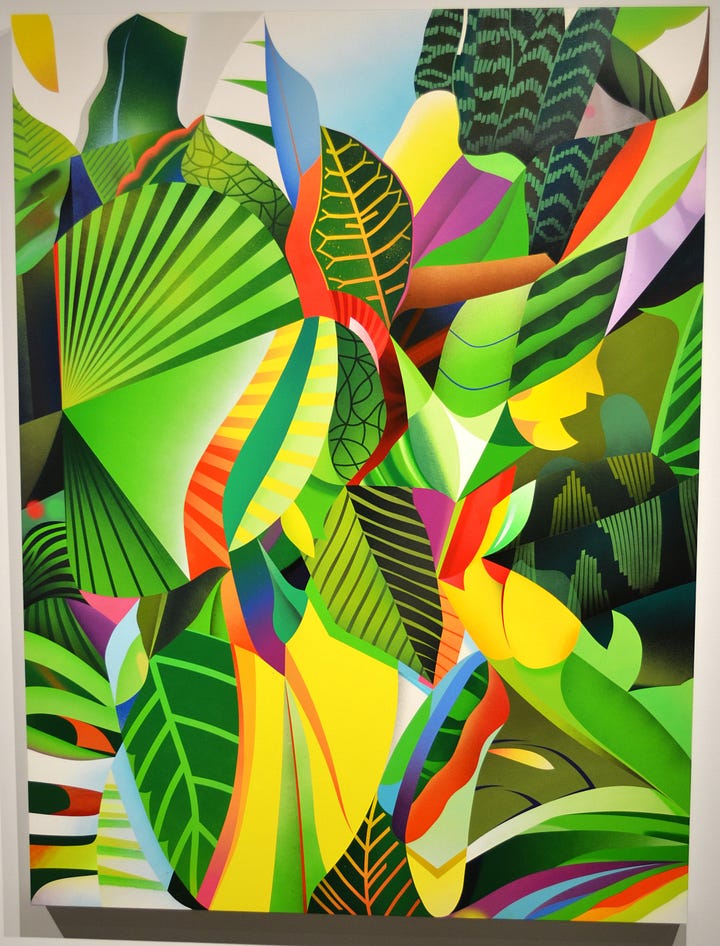
Everything he displays is meant to symbolize nature in some way without realistically depicting it. Indeed, if there is an artist whose depictions of the tropical world whose work Dual’s reminds me of, it is Henri Rousseau. Rousseau worked as a low-level government employee in Paris and never visited a jungle, although he painted them frequently, even obsessively.
Dual’s fragmented, even quasi-cubist, depiction of nature reminds me of Rousseau’s famously naïve depiction of jungles. Turning the Reeves gallery into a tropical abode, complete with crashed airplane and live snakes, the feeling of a fantasy version of tropical reality is amplified. I wonder how these paintings would have worked in a totally “neutral” white cube gallery. The fantasy environment added so much to my enjoyment of this work.
Russ Rubin’s exhibit Lost and Found weirdly enough compliments Dual’s show very well. Rubin’s paintings are also quasi-abstract. Even thought there are no recognizable images in the paintings, they have the feel of landscapes. But because they have a lot of red and brown colors, they do not seem tropical like Dual’s paintings.
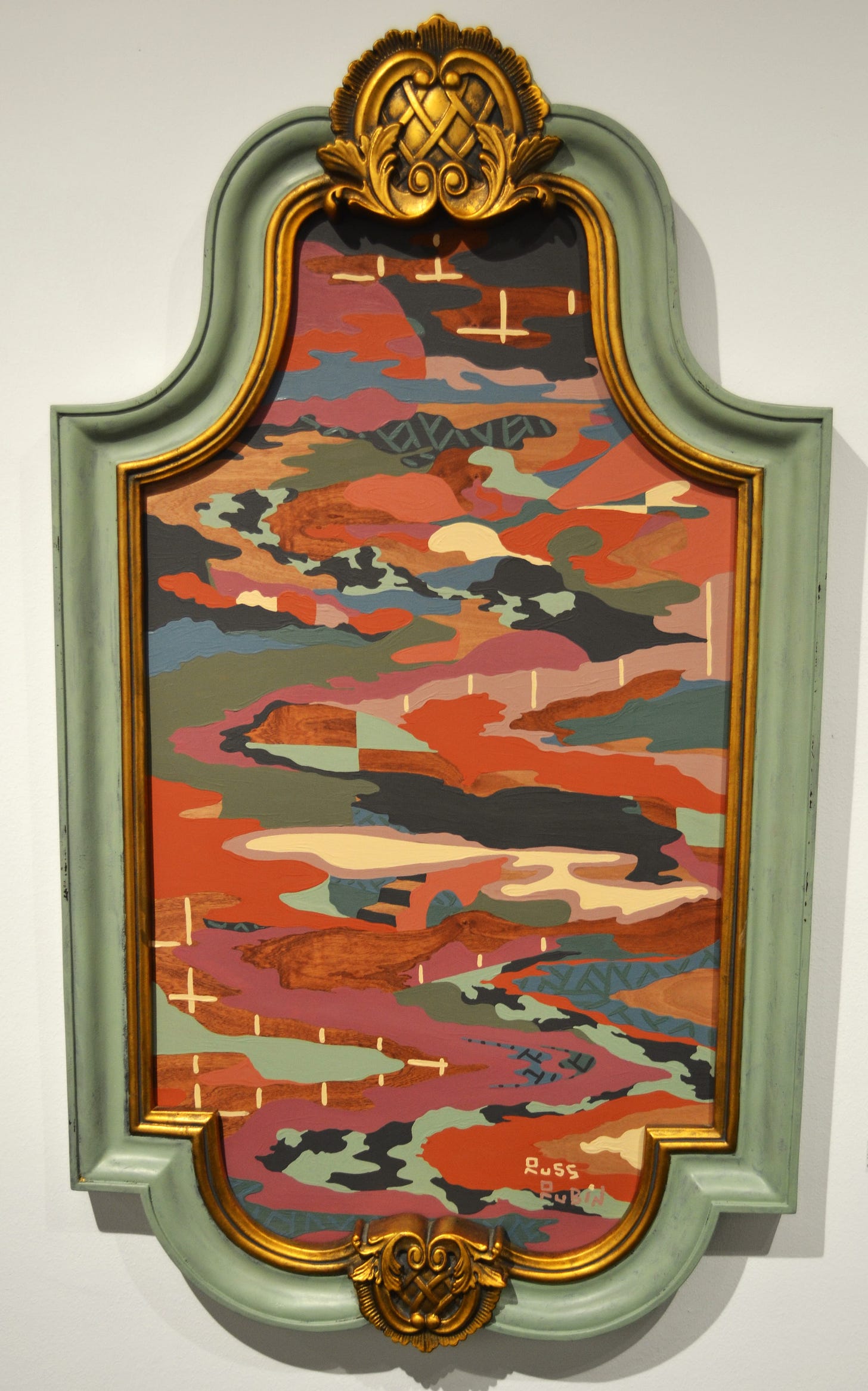
It feels as if one is looking over a landscape from a distance, seeing rivers and bodies of water and well as features like bluffs, hills, and cliffs. They seem to be halfway between maps and landscapes. Rubin combines non-natural patterns like checks and stripes among the landscape-like elements. Imagine a paint-by-numbers landscape where the shapes defining the elements are painted with random colors and patterns.
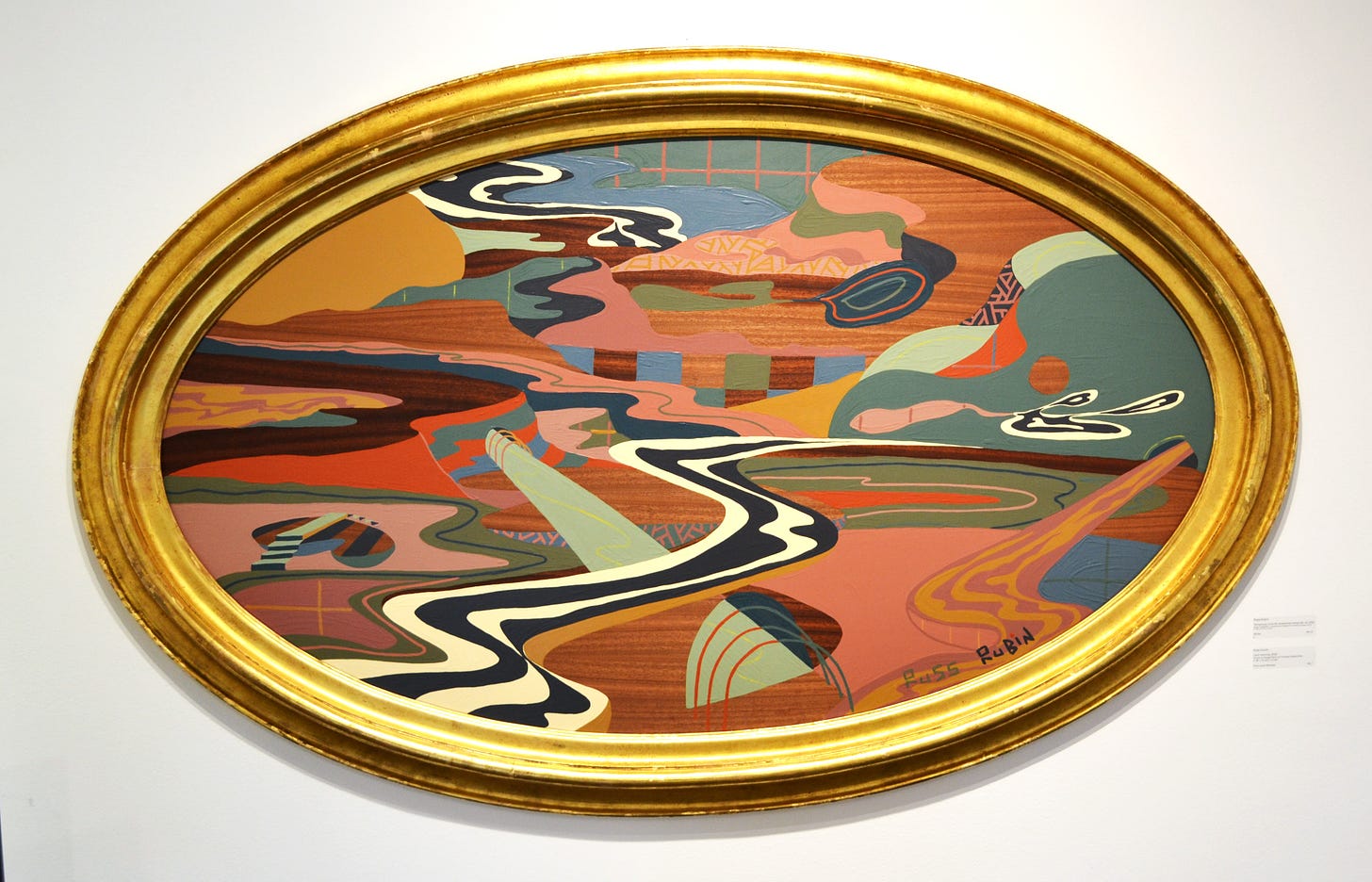
And to add another slightly weird element, these images are all placed within vintage, decorative frames, adding an element of antiquity or history to the images.
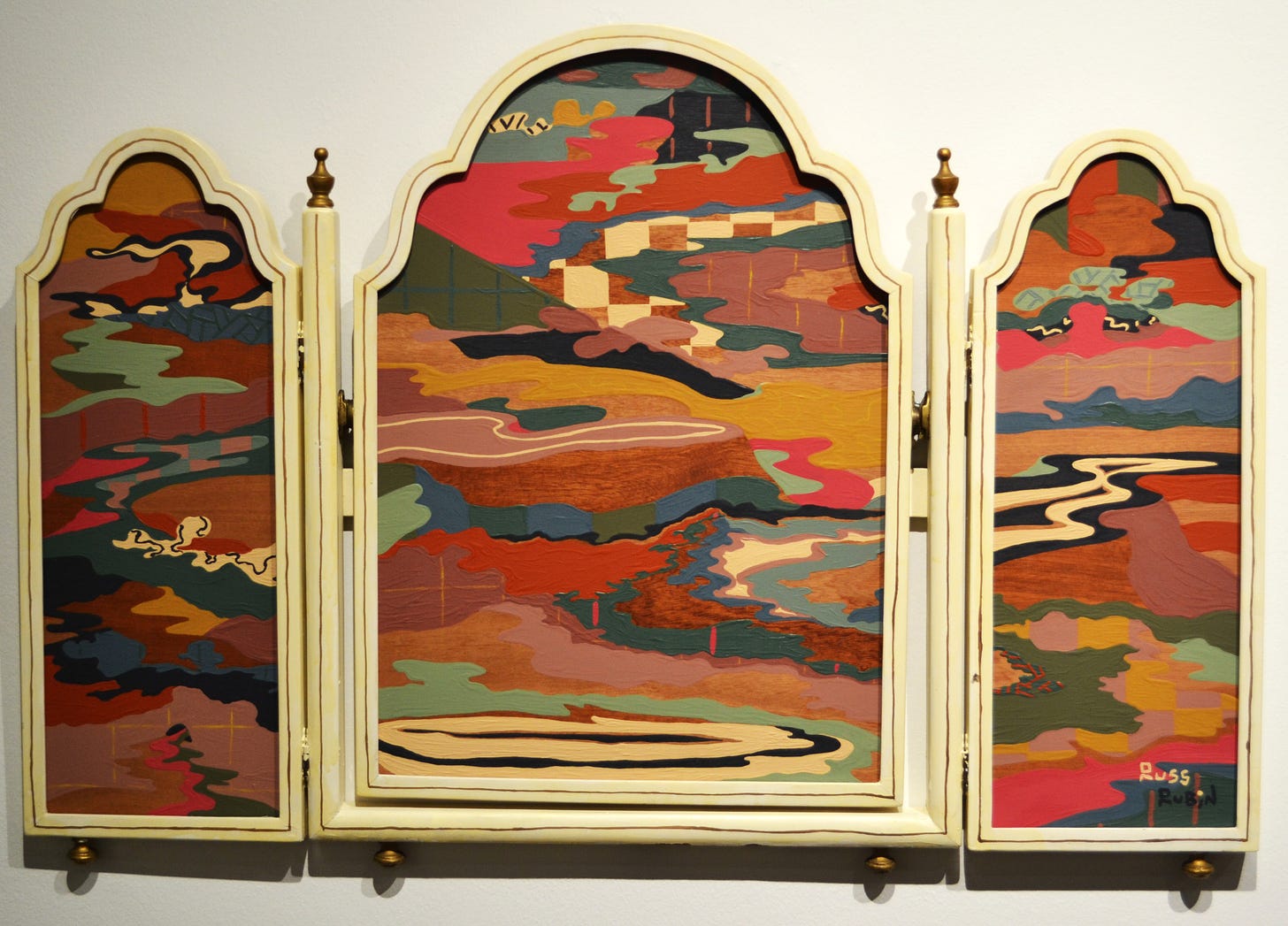
Rubin likes to play with nostalgic, vintage imagery, as seen in Lord, Give Me A Sign. This construction of eleven canvases has a double nostalgia. It feels like a contemporary bit of nostalgia meant to recall 80s-era nostalgia (think Memphis furniture or old Fiorucci advertisements from the 1980s, for example). It seems like there must be a term for things meant to recall earlier nostalgic design, but I don’t know what it is.
But what other term would one use to describe the sculpture Found? It makes me think of the 80s while simultaneously making me think of even earlier modern design. Playful and organic, with a curvy Jetsons-like feel.
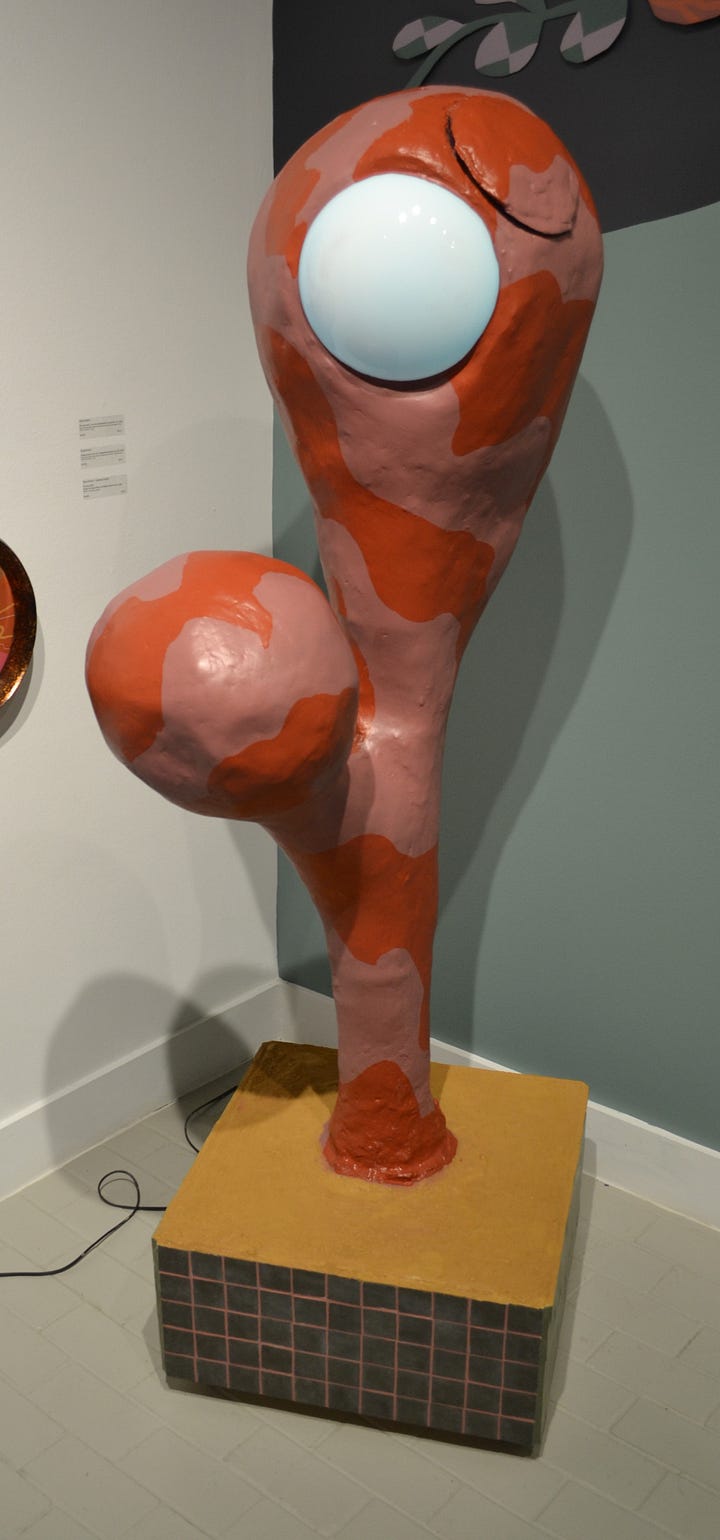
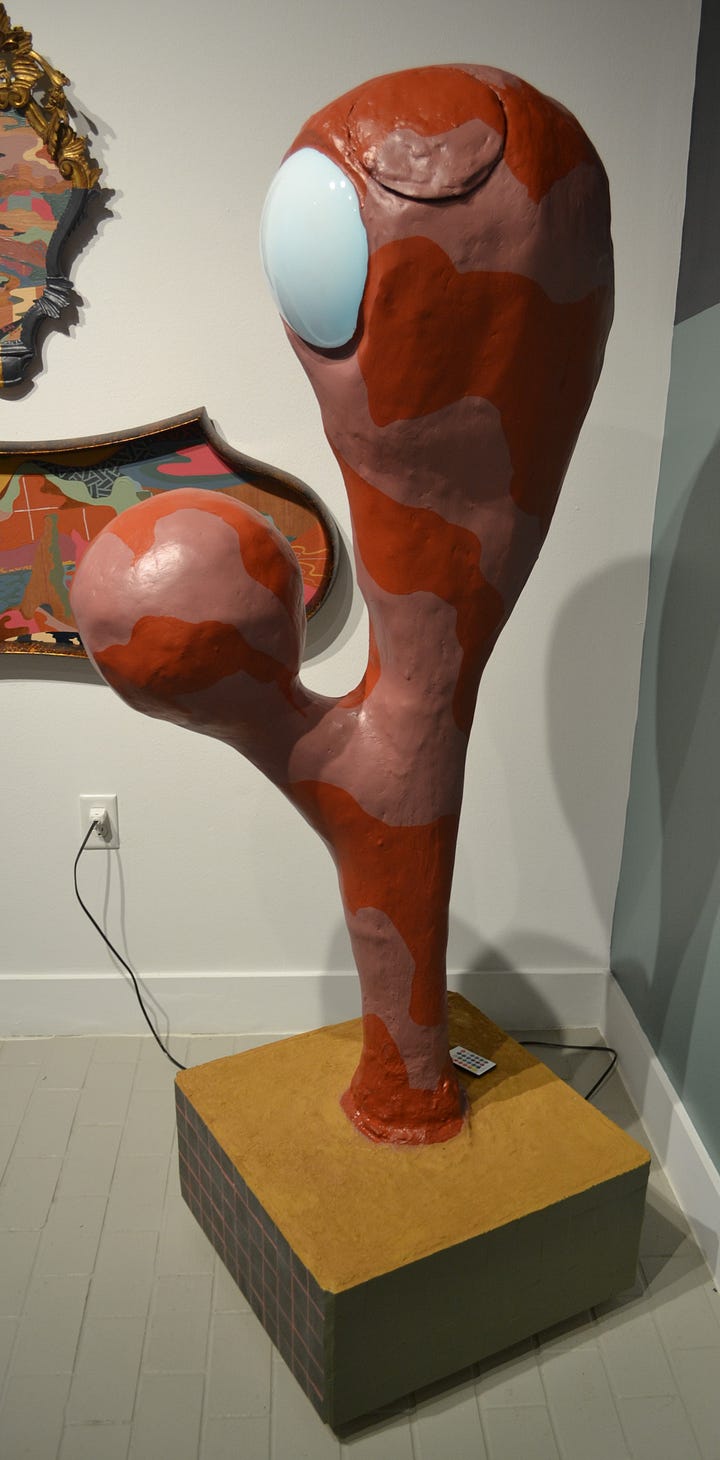
Neither Dual nor Rubin are mining profound emotions or complex intellectual fields. Which is fine! Not all art has to be serious. These two exhibits are both great fun.
[Please consider supporting this publication by becoming a patron, and you can also support it by patronizing our online store. And one more way to support this work is to buy books through The Great God Pan is Dead’s bookstore. ]




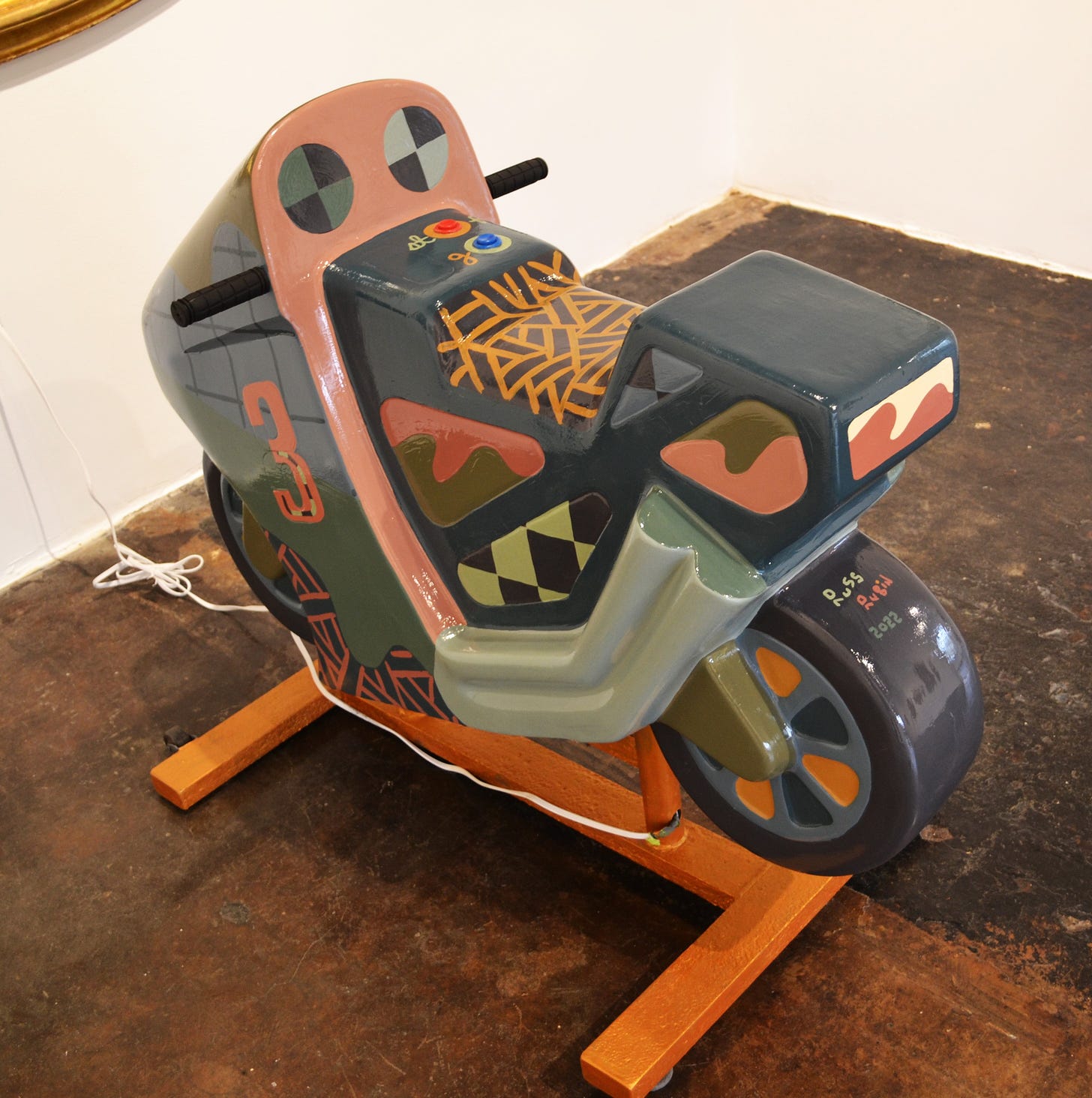
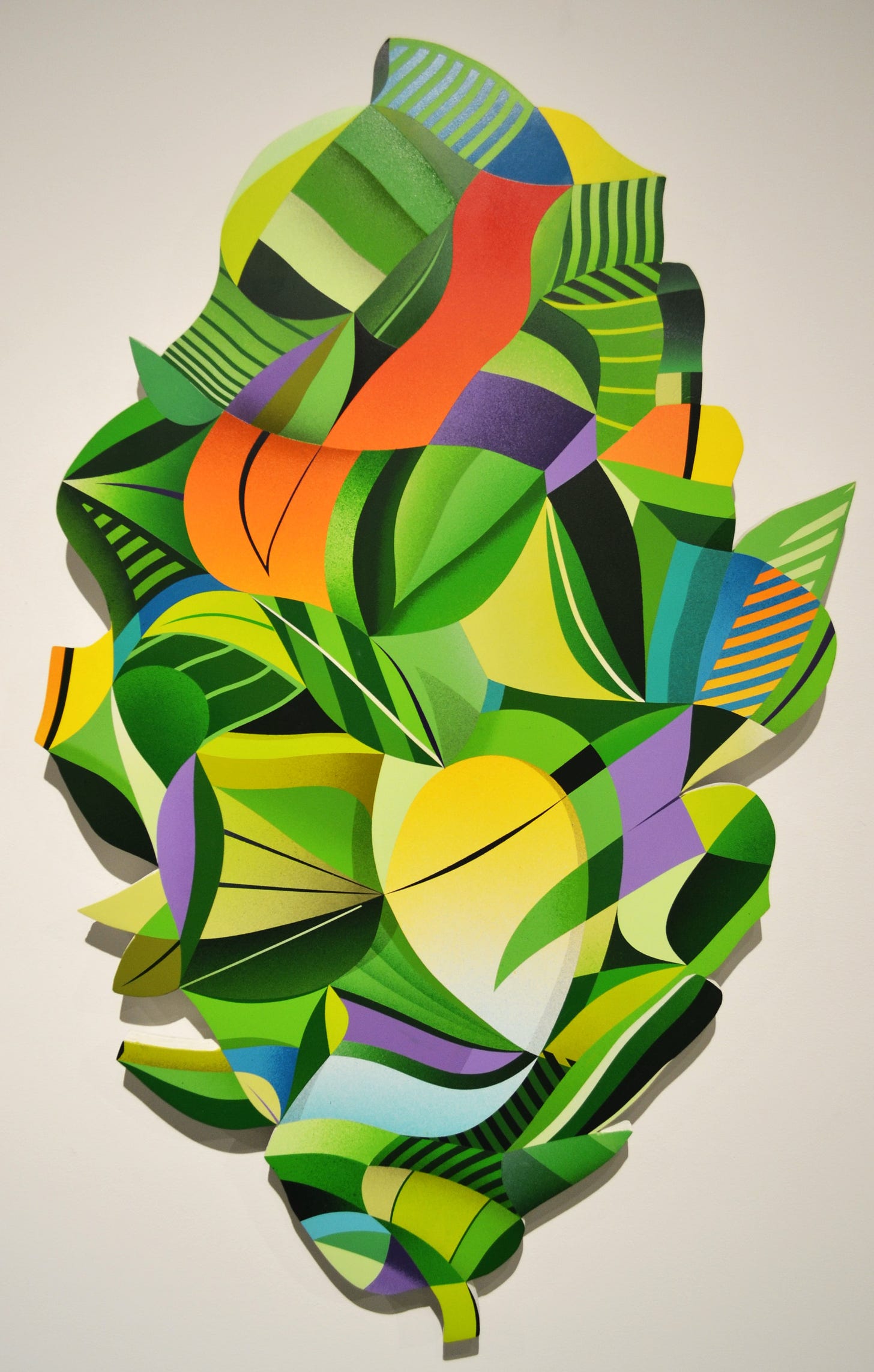
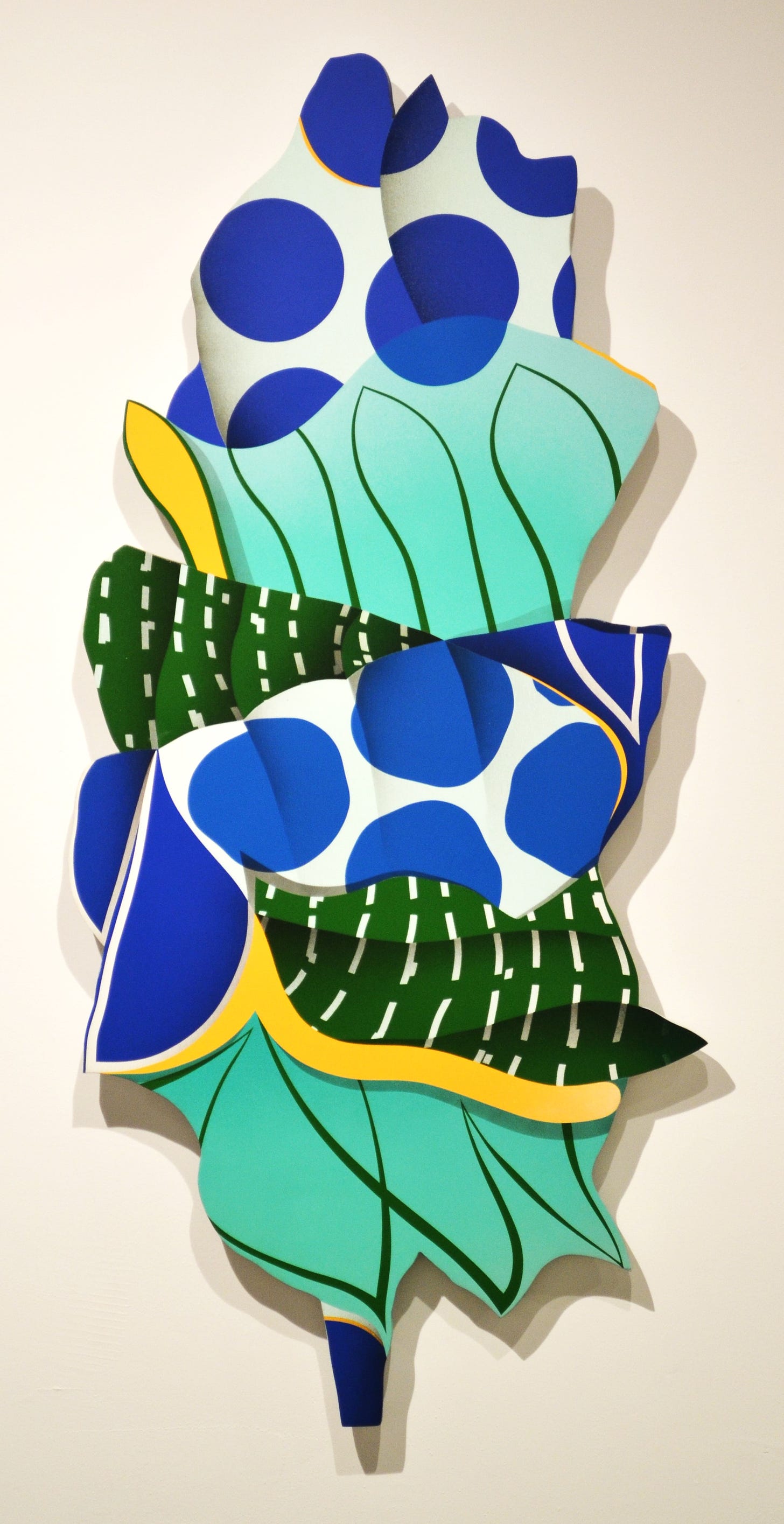
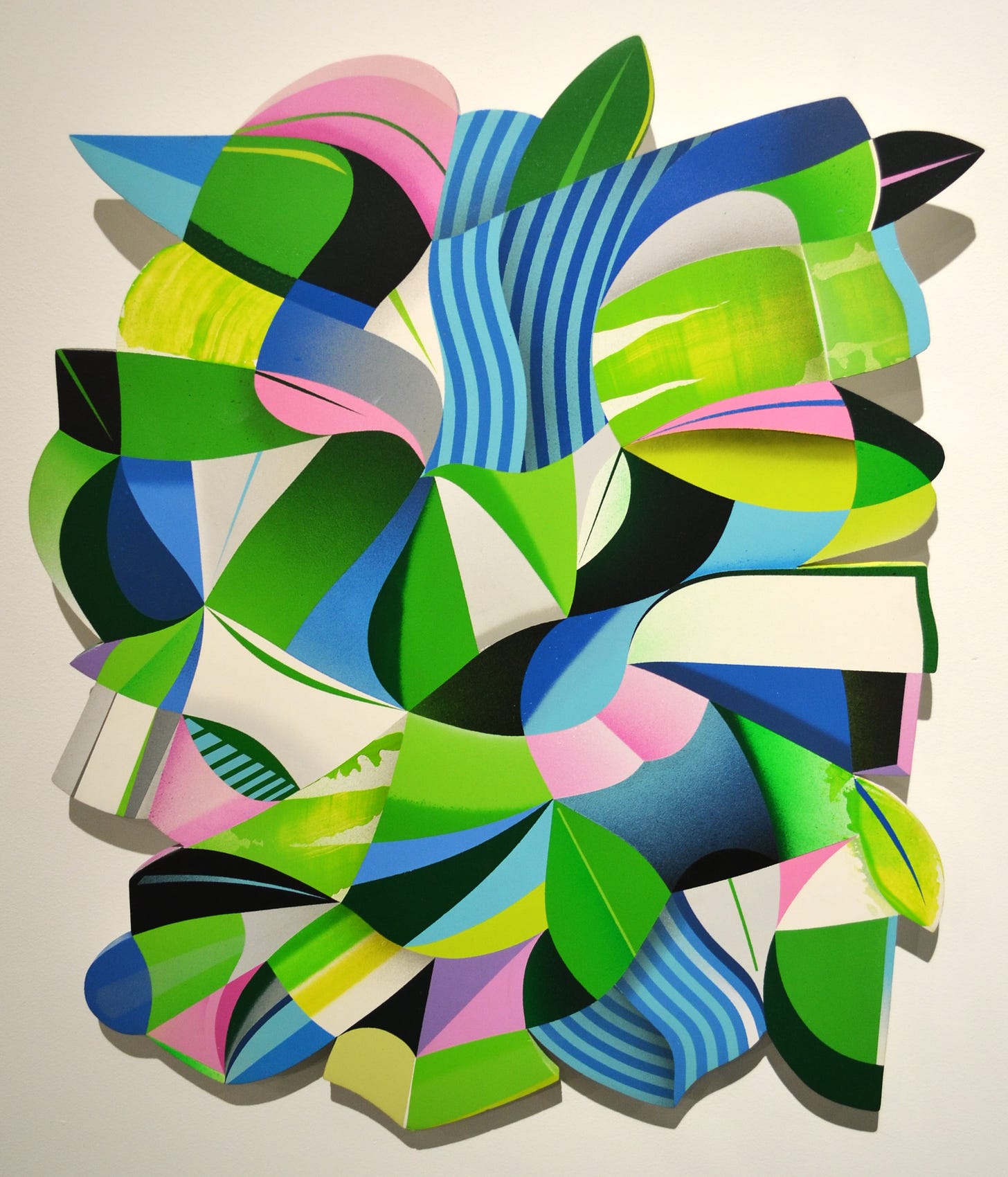
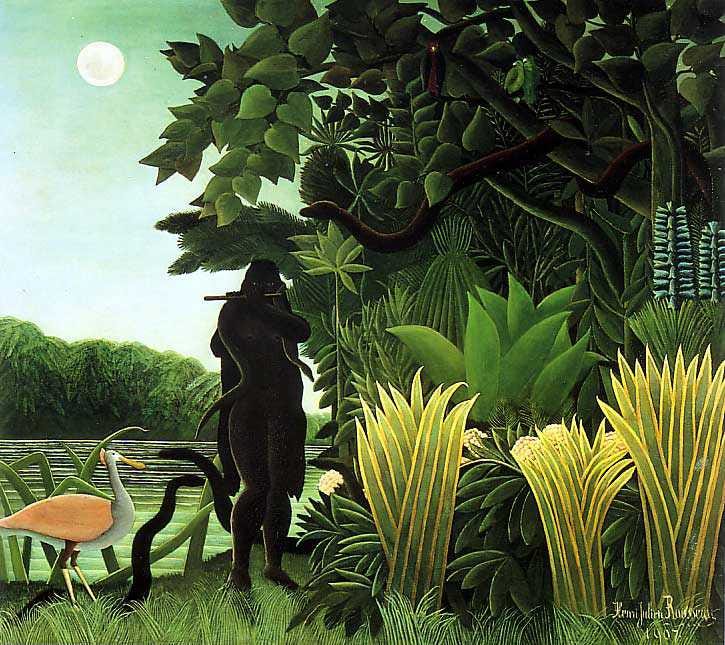
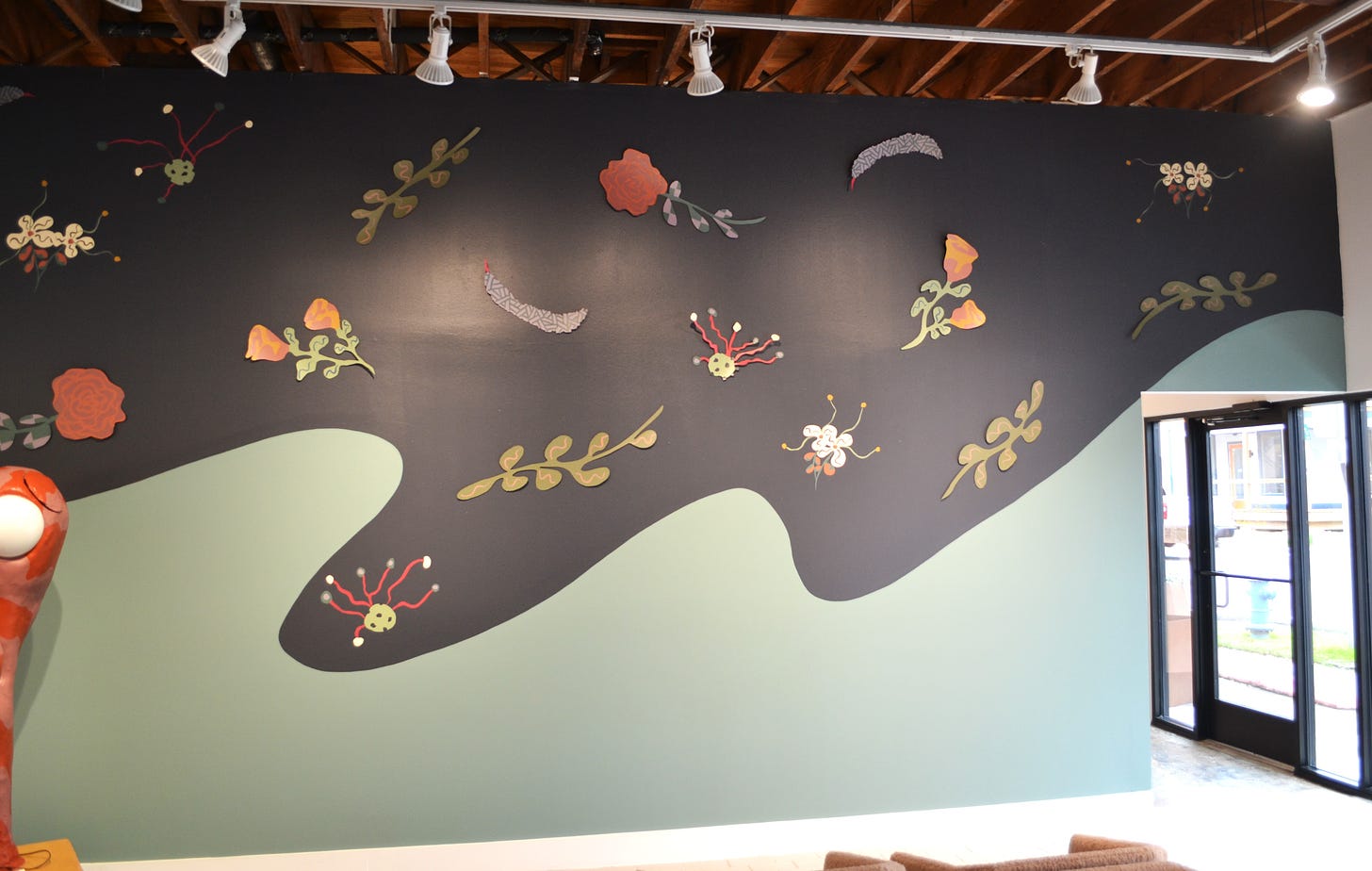
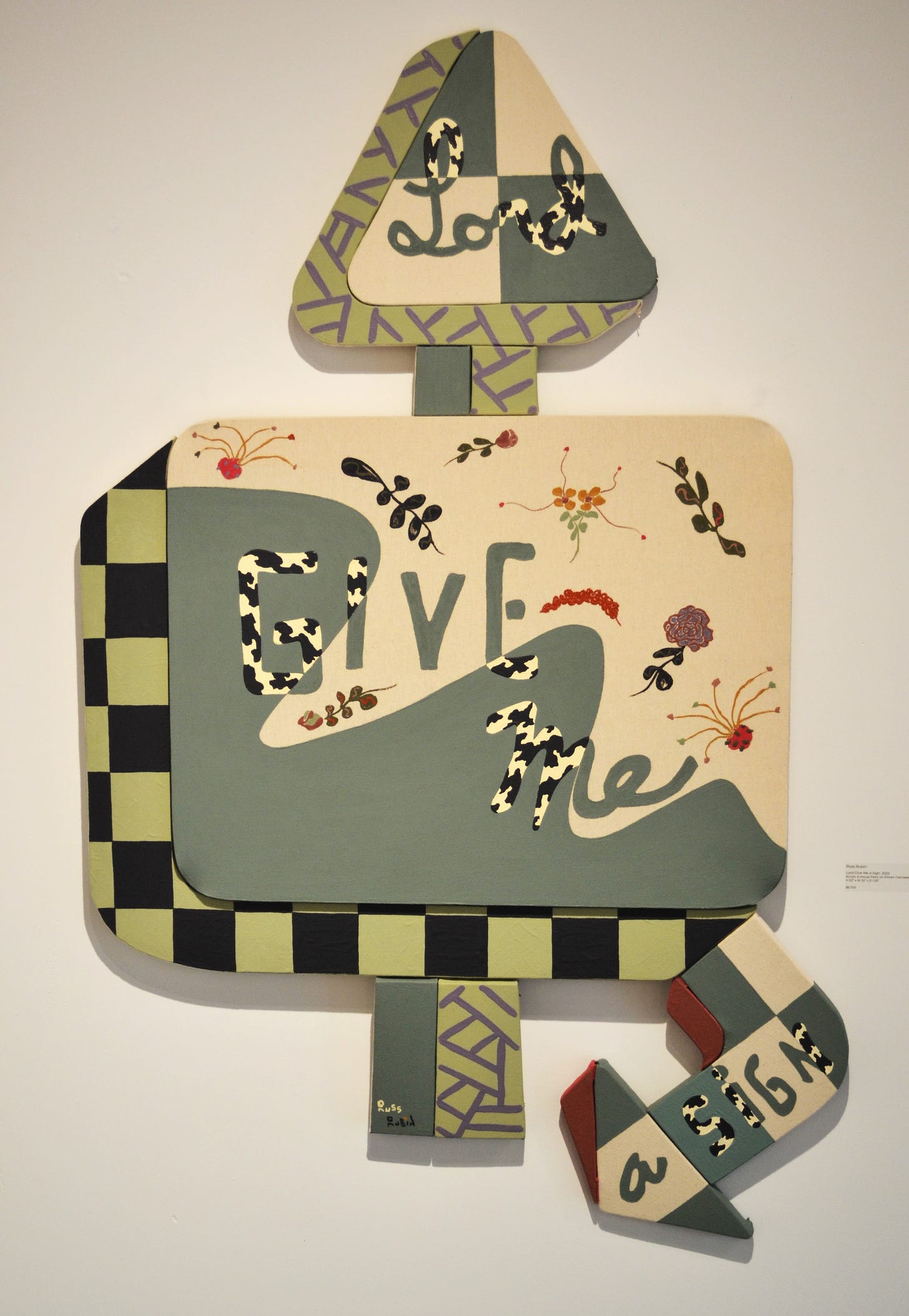
That's some really excellent work from both artists.